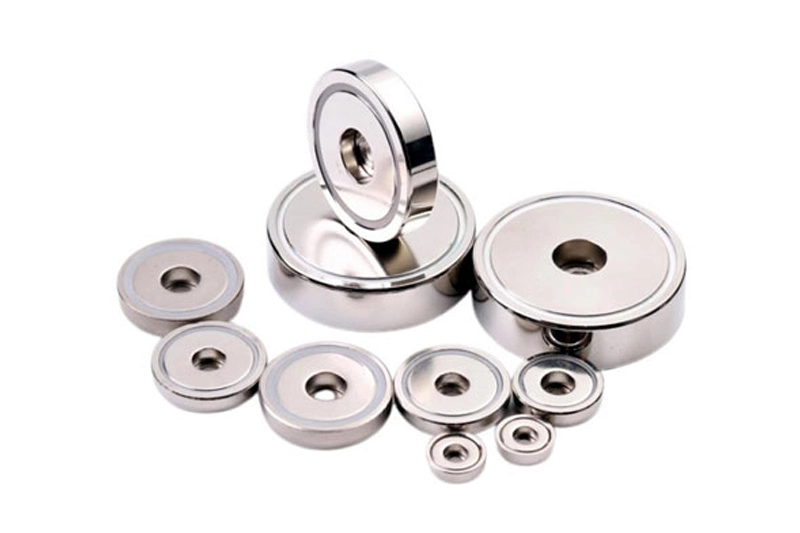Neodymium magnet, also known as "Neodymium Iron Boron", are permanent magnets made of Neodymium, Iron, and Boron. They have the highest magnetic performance of all permanent magnets and are stronger than Samarium Cobalt (SmCo), Alnico, and Ferrite. In addition to high magnetic strength, they are relatively inexpensive, making them an ideal choice for various industrial and technological applications.
Neodymium magnets offer maximum performance with the smallest magnetic volume. It should always be covered to protect it from the risk of corrosion. Common surface treatments include NiCuNi, Zinc, Epoxy Resin, and Gold Plating. It is used in almost every industry, including automotive, aerospace, wind turbines, military, electrical appliances, lighting, separation, engines, and generators.
1. Grade
Neodymium magnets come in various grades. For example, N35, N38, N42, N38SH. The current high-quality Neodymium magnets are N52, and each letter behind it represents the temperature rating of the magnet. Magnets without letters after this grade are neodymium at standard temperature. Therefore, standard Neodymium magnets with no letter indicate a maximum working temperature of 80℃.
2. Temperature Impact on Neodymium magnets
The performance of Neodymium magnets, like magnetic salvage fishing magnet, is affected by temperature. Neodymium magnets become stronger at lower temperatures and perform better at lower temperatures. Neodymium magnets are said to work well at temperatures as low as -130℃.
In addition, Neodymium magnets of certain grades may be exposed to very high temperatures before their properties begin to change, and lose their magnetism temporarily or permanently.
The magnetic force of Neodymium magnets decreases by 0.11% each time the temperature rises. The magnetic field of Neodymium magnets increases at temperatures up to 80℃, after which efficiency begins to decline. NdFeB has temperature rating values of different levels. The rated temperature of the high-temperature-resistant version ranges from a maximum of 100℃ to 230℃. Do not use these magnets above 130℃ unless the magnetic circuit is carefully designed.
3. Surface Treatment Requirements
Waterproof neodymium magnets without surface coatings will rust when exposed to moisture. Therefore, all Neodymium or rare earth magnets require some protective coating to minimize corrosion and ideally prevent it. The standard/standard protective layer is a Ni-Cu-Ni layer.
4. Advantages and Disadvantages of Neodymium magnets
① Advantages
Maximized performance related to size. Suitable for narrow spaces and compact applications. Suitable for low temperature conditions (liquid nitrogen, etc.).
The maximum output temperature of standard Neodymium magnets is 80℃. Higher Hci versions can be rated at 100℃, 120℃, 150℃, 180℃, 200℃, and 220℃/230℃.
High coercivity (Hci) resists demagnetization. The alloy has better corrosion resistance than standard Neodymium magnets but requires coating.
② Disadvantages
A protective layer is required to prevent iron in the alloy from rusting. The alloy is much more expensive and still shows signs of rust. Samarium Cobalt may be better above 150℃-180℃.

Related Article
Please fill the form to let us know your need. Our sales will get in touch with you ASAP.